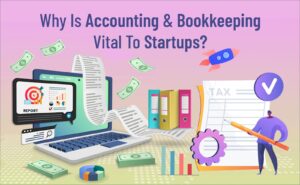To understand the concept of product-market fit and its framework in detail let’s understand a scenario first. You can think of product/market fit as sailing, where the sail and demand are the wind.
So, you have to build a sail. You must find the wind to power it. Then the boat will work. Similarly, you need to build a product whose value proposition satisfies a market’s needs its potential customers.
You work on this exciting idea. Once the product is live, you start telling everyone how fantastic your idea is. You hear pretty lovely feedback from them.
You give them access to your beta. But you see that these guys are not that passionate about your product after a few weeks.
This is an indication that one does not have a product/market fit.
When launching their startup, founders usually believe that they solve a problem that the market needs to be solved. But often, the problem is not that huge.
Good thing — it does not take too much time to notice that you do not have a product/market fit. It would help if you were flexible enough to pivot very quickly.
We will guide you through the concept of product-market fit. You will understand the steps required to ascertain whether there is a product-market fit.
Understanding the concept

Created by Dan Olsen.
Experiment. Fail and learn.
Experiment. Fail and learn.
Experiment. Fail and learn.
Experiment. Succeed and learn.
Repeat as required.
Product/market fit shows the scope of the problem you are trying to solve. It indicates how well your product or service solves that problem.
You may address a market that wants your product. It is as if the dogs are eating the dog food. Then you will succeed, even if you screw up almost everything.
Conversely, the dogs may not want to eat dog food. Then you have no chance of winning, even if you are good at execution.
The winner is always the first firm to deliver the food the dogs want to eat.
The process of product-market fit can be explained as below:
-
Dan Olsen
He is a product management expert. He has proposed a six-step product-market fit framework called as the Lean Product Process. It allows you to go through the right process of measuring the product/market fit.
-
Andy Rachleff
He is the co-founder of the investment firm Wealthfront and Benchmark Capital. He first developed the idea of product/market fit.
According to Andy, when you first start, the only thing that matters is finding a customer cohort. These customers genuinely value what you offer. Growth alone means next to nothing.
-
Marc Andreessen
He is the co-founder of leading Silicon Valley venture capital firm Andreessen Horowitz. He defined the term in his 2007 blog post.
Andreessen says product/market fit means being in a good market. It is with a product that can satisfy that market.
Yes, it sounds a little bit vague. But it pretty much tells about how big your market is. Is the problem you are trying to solve for the customers, and is your solution worth paying for?
-
Josh Porter & Tim Harsch
Another definition was found in Principles of Product Design. This was by Josh Porter and suggested by Tim Harsch.
Josh proposes customer excitement as an indicator of product/market fit. According to him, the product/market fit is when people sell for you.
-
Forbes
Forbes characterizes product-market fit as a hair-on-fire problem. A product satisfies customer needs so that alternative products do not.
E.g., more than 40% of your customers may be very disappointed to see your product disappear from the market. Then there is a good chance you have created a must-have item.
Product/Market fit framework & template

Let’s understand the product-market fit framework in detail.
-
Identify Your Target Customer
Market segmentation will help you define your “buyer personas.” It will describe them to your product team so that everyone understands who you are building the product for.
Start from high-level research. Then refine your choices to get the ultimate buyer persona.
-
Understand the Big Customer Needs
Determine the most significant needs of potential customers. It is important to find specific needs that can create an excellent market opportunity.
The needs have to be pretty compelling and vital for those customers.
-
Know your Value Proposition
The value proposition is about how you are going to face the competition. The market might have similar product makers.
So, it would help if you came up with something utterly innovative and thoroughly ground-breaking to win people’s hearts and outperform your competitors.
Include new features that can excite buyers. That will be your value proposition.
-
Specify your Minimum Viable Product Feature Set
Whatever you are doing, it is a must to start from somewhere. You can think about evolving later on. You will have to.
For example, if the user has to create an account with your product, they should delete it at some point. This is a standard feature that the MVP should have.
Include only the most essential features. There will be many opportunities to improve the product later on.
-
Create Your Minimum Viable Product Prototype
Another important step of the product-market fit framework is to create a minimum viable product prototype. This one is simple: do not code until you have the prototype at hand.
There are hundreds of prototyping and mockup tools such as UXPin, Sketch, InVision, etc.
Show the prototype to your potential users. Ask for opinions and feedback, and observe their behavior.
Most prototyping tools provide enough interactivity. Use it to obtain critical feedback from customers.
-
Test the MVP Prototype with Potential Customers
After the MVP prototype, the last step in the product-market fit framework should be to get comments coming from the target audience.
Do not turn to your friends or family members unless they are potential customers of yours. You risk getting the wrong type of feedback.
Instead, give free access to potential users. These people might end up buying the product later on when it is ready.
Avoid asking closed Yes/No questions. Instead, encourage participation, brainstorming, idea generation.
Listen to your testers and identify patterns. Then find ways to improve the product.
Testing product/market fit
Testing the product/market fit consists of six significant steps. We will go through each step separately.
-
The 40% rule or the Sean Ellis Test
Sean Ellis is the author of “Hacking Growth.” He was the first marketer at Dropbox. He coined the phrase “growth hacking.”
Sean has devised a simple test to measure the product-market fit. It is the “40% rule.”
Survey your customers about their feelings without your services. 40% must say that they would be “very disappointed.”
40% of your surveyed customers may say that they consider your product a “must-have.” Then, you are on the winning side.
-
Bounce Rate
The bounce rate is the user percentage who visits a page on your website. They then leave it before taking any action.
Sometimes a 60% bounce rate is considered high. It means that your website is not giving the right first impression to its visitors.
Low bounce rates mean a visitor’s expectations are met.
But a high bounce rate does not necessarily mean that your business is useless.
Users can bounce because of multiple reasons, such as poor design or low content/messaging
There are many tools to measure the bounce rate. Google Analytics is the best for me.
-
Time on Site
The more time someone spends on your website, the more they like it.
But it is hard to define a good average time on site. It somewhat depends on the niche or the type of product. But there are a lot of other factors.
But if you want to track it, you can at least compare the average time on site for other months or weeks.
You can improve your site performance this way.
A time above 2 minutes is considered to be a bare minimum for many software products.
-
Pages Per Visit
This is the average number of pages in a single visit which the user travels.
The user may visit more than 4–5 pages. This can be considered a high number already.
This shows that the visitor is interested in what they see on your website.
Remember that a longer Time on Site and Pages per Visit indicates that the user experience is satisfactory.
-
Returning Visitors
Returning visitors are the ones who come back to your website after visiting it once.
The percentage of returning visitors can differ.
So, make sure to compare industry average values. Compare the returning visitors weekly and monthly for your website.
A large number of returning visitors reflect the lasting impact a product has on the customers.
And if the rate of returning visitors is below 25%, you have to work on your product harder.
-
Customer Lifetime Value
The customer lifetime value is the average profit from each customer. The duration is the entire time they remain your client.
Suppose you have got a high average customer lifetime value. In that case, you will sustain your business model and allocate money to marketing and ads and improve your product to attract more users.
Of course, there are many other metrics you can track to test product/market fit.
You can prioritize those metrics too.
If the metrics mentioned above are above average and meet the 40% rule, congratulations, you have achieved product/market fit!
-
Do your Customers Recommend you to Friends?
Net Promoter Score (NPS) is a simple survey, asking customers to rate some questions from 1–10.
E.g., “How much did you like the product?”
Here is a necessary explanation of the Net Promoter score Metric and how it is calculated.
Services like Delighted automate the collection and analysis of data.
-
The Uncertainty Matrix
One of the many important ways professionals studies this concept is to use a product-market fit uncertainty matrix.
This tool is used by businesses to assess whether their product will satisfy a particular space in the market.
These considerations are incredibly important when trying to measure this concept.
Some Real-World Examples of Product-Market Fit
-
Spotify
Daniel Ek is the CEO of Spotify. He recognized that most of the product-market fit pieces were already in place.
This was when music-sharing platform Napster collapsed in 2001 following allegations of copyright infringement.
The content already existed. Napster had amassed a sizeable market of users.
Ek realized that users would pay a small fee for legal access to the music. He was proved right.
Spotify has 320 million monthly active users as of November 2020.
-
Uber: The Free Ride
Uber was initially offering free rides between regional tech events in San Francisco. This helped it capture product-market fit.
Its co-founders realized that the taxi system was expensive and outdated. Few people used it.
Once the Uber app gained steam, Uber offered 50% discounts to first-time users.
It could solve a problem and create a need at the same time.
Consumers were not demanding better taxi service, but once a more convenient, more straightforward option emerged, users began to rely on the concept.
The network effect kicked in. Users began sharing their social media experiences, providing social proof for the startup.
To date, Uber has about 75 million riders. The company recorded 5 billion rides in 2017 alone.
Summary
Meeting a few innovation metrics is not sufficient to achieve market traction. Your product should have a high or too high degree of product/market fit.
It is vital to understand whether you are just solving a problem or eliminating a massive burden from the users’ shoulders.
People already pay for many things these days. They will not pay you if it is only a solution to a minor problem.
Your product should be life-changing. It should excite people! Think about the difference between “Nice” and “Wow!” Keep that in mind when you evaluate and build your next product.








